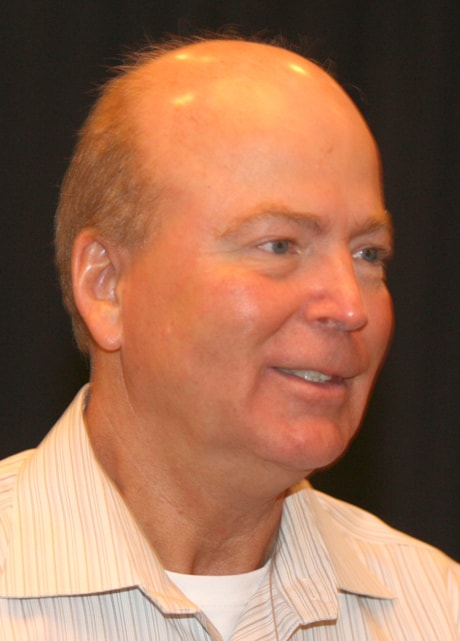Red Deer’s downtown needs an identity, clustered specialty businesses and some directional signs to draw people — out-of-towners don’t know how to find it, says an expert on downtown revitalization.
Roger Brooks couldn’t find directions to Red Deer’s central district from Hwy 2 or Gaetz Avenue. And when he asked other people staying at a local hotel, they didn’t know where the downtown was either.
“Twelve people said they have no clue where it is,” said Brooks, whose Destination Development International company in Seattle specializes in community branding, marketing and tourism.
But a lack of signage is just one problem that needs fixing if Red Deer’s downtown is to draw local and tourist interest.
Brooks outlined a blueprint for successful destination downtowns for an audience from various Alberta municipalities Thursday at the Black Knight Inn. A large enough downtown venue could not be found since the Red Deer Lodge hasn’t rebuilt its conference rooms after a portion of its roof collapsed this winter.
Finding a local brand was near the top of his list.
“You have to decide what you want to be,” said Brooks, who talked about some city downtowns becoming known for sports, entertainment or nature themes. Others became retail capitals for Western living, antiques, bridal stores, industrial design installations or galleries.
Still others have focused on having a “clustered mass” of restaurants with outdoor patios, or nightclubs, aquatic, Bavarian or equestrian themes — or, in the case of Vulcan, the Star Trek-related “Live Long and Prosper.”
St. Albert, known for the gardening books written by former resident and Alberta lieutenant governor Lois Hole, picked a “Cultivate Life” theme, which the community is using in lifestyle advertisements.
Next, Brooks advised downtown planners to “think like a mall” and ensure there’s a clustering of speciality stores or restaurants to draw people to the area, including anchor tenants.
This does not mean pharmacies or offices, he stressed.
Within three lineal blocks, there should be 10 places that sell food, mixed with destination retail shops, such as antique stores (not second-hand shops, added Brooks), and 10 places that stay open after 6 p.m.
This may take a few years to organize, since city officials need to get property owners on side to rent or lease to appropriate businesses.
But Brooks maintained that business profits jump in areas where shops are open in the evenings, metered parking is offered for at least four hours, where signs stick out from buildings and can be read by pedestrians, streets are narrow with good crosswalks, and wide sidewalks are lined with mature trees.
While businesses balk at trees blocking signs, he assured the audience that trees are good for business.
Common mistakes that municipalities make is to cut off vehicle traffic prematurely, and try to beautify downtowns with new benches and flower baskets, thinking this will draw people — it won’t, he said.
Streets should become pedestrian ways only when the area is already very popular, Brooks added. And he compared beautified downtowns, including those with impressive historic buildings, to nice theatrical sets — there will be no audience unless there’s something on stage worth seeing.
As for Red Deer’s downtown, Brooks said it has some nice trees, banners, and architecture, but needs defined districts, a brand, clustered speciality businesses — and better signs.
Red Deer Mayor Morris Flewwelling said Brooks’ points will certainly be discussed.
Narrowing down what the city has to offer to one brand will be difficult, he predicted, noting Red Deer is known for its parks and trails, proximity to lakes, being a convention capital, and arts and culture, among other things.
But Flewwelling acknowledged better directional signs are needed. “We always worry about sign clutter, but we have to rethink that.”
lmichelin@www.reddeeradvocate.com
